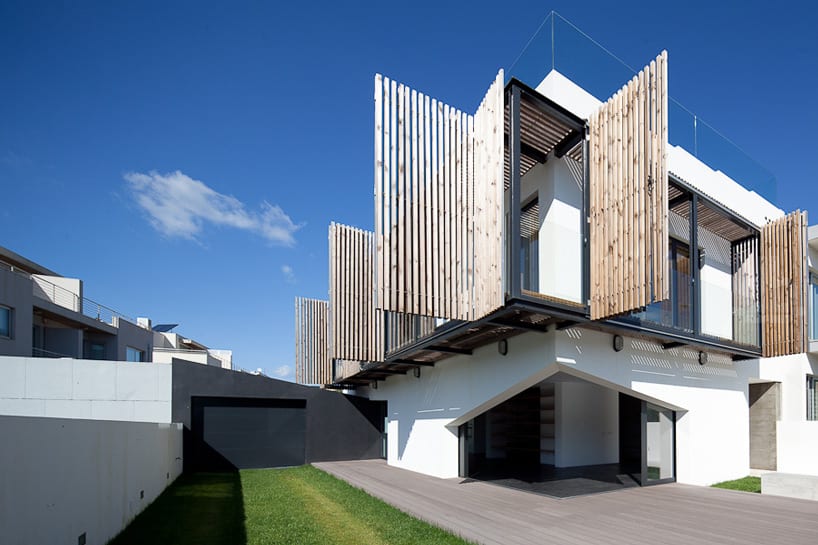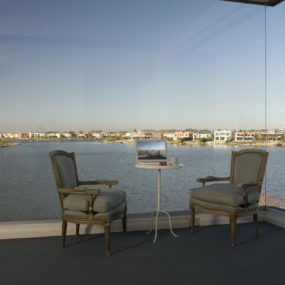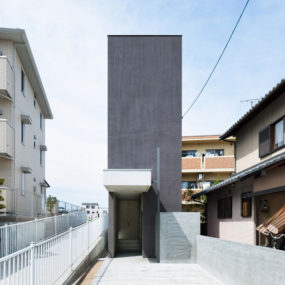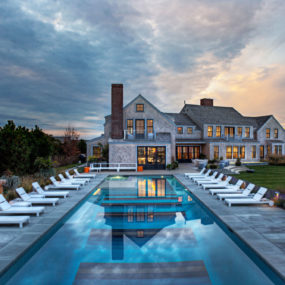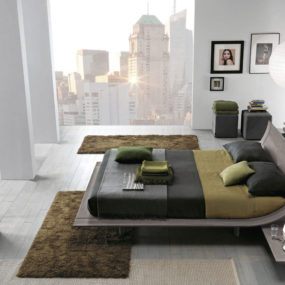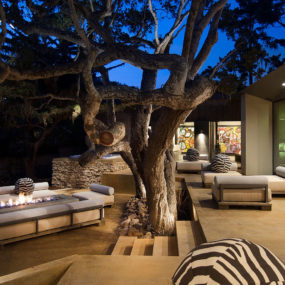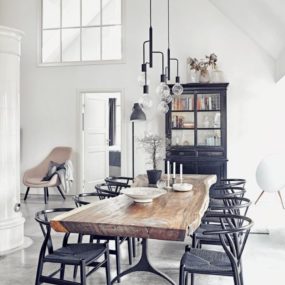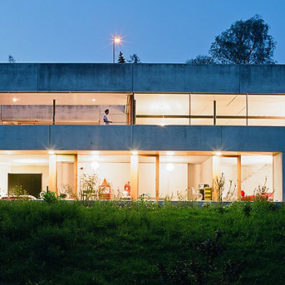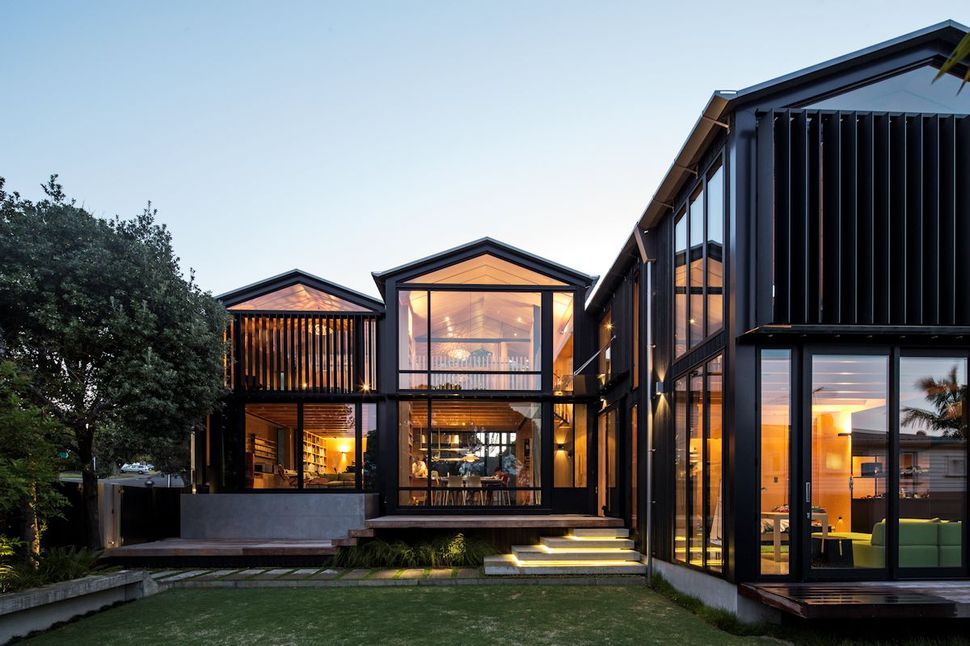
Strachan Group Architects in collaboration with Rachael Rush were challenged to create a family home that was open to the elements but still retained privacy from its neighbors and the street even though the site was on an exposed urban corner lot in Auckland, New Zealand. The resulting Boatsheds home was designed with a staggered facade of 3 glass gables to create a private garden area that completely exposed the home to the landscape and the landscape to the home. The glazings can be opened to create a continuous indoor-outdoor lifestyle and on those days when the summer sun is at its hottest, louvers can be closed to block the heat from entering.

Aside from providing shade, the operable exterior louvers can also be closed to present a private facade to public. Since the Boatsheds house is on a corner lot with two 5m stretches of sidewalks and street backing onto it, as well as a 3-storey home next to it, the architects creatively dealt with the passers-by and neighbours by both staggering the profile of the home and with the use of the exterior operable louvers.
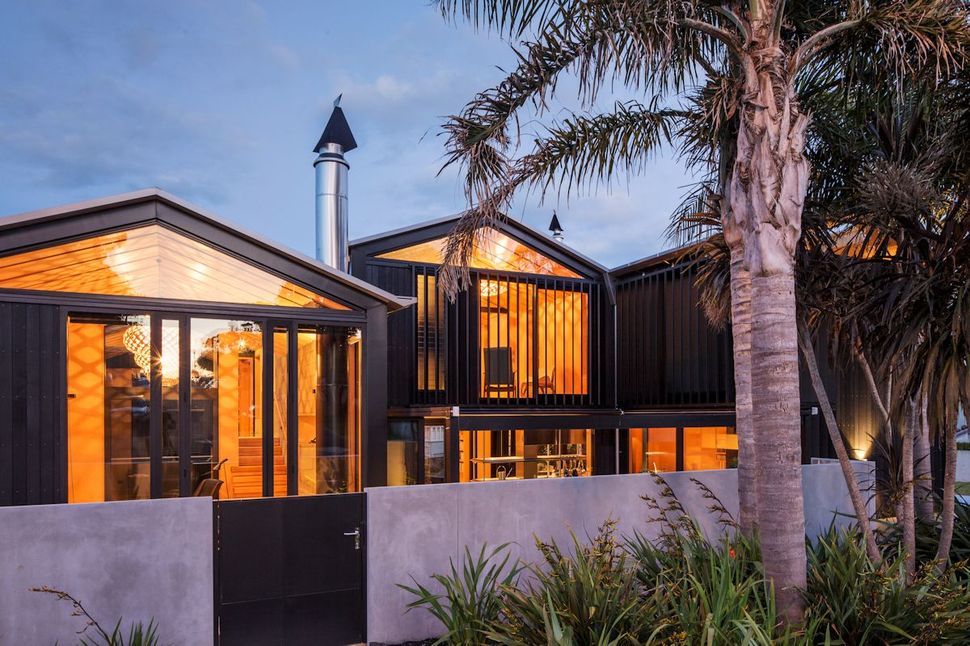
The louvers of the Boatsheds home allow the homeowners to customize the amount of privacy and sun shade they need on any given day or evening and the solid fence that wraps the two open sides of the lot create an additional barrier to those passing by.
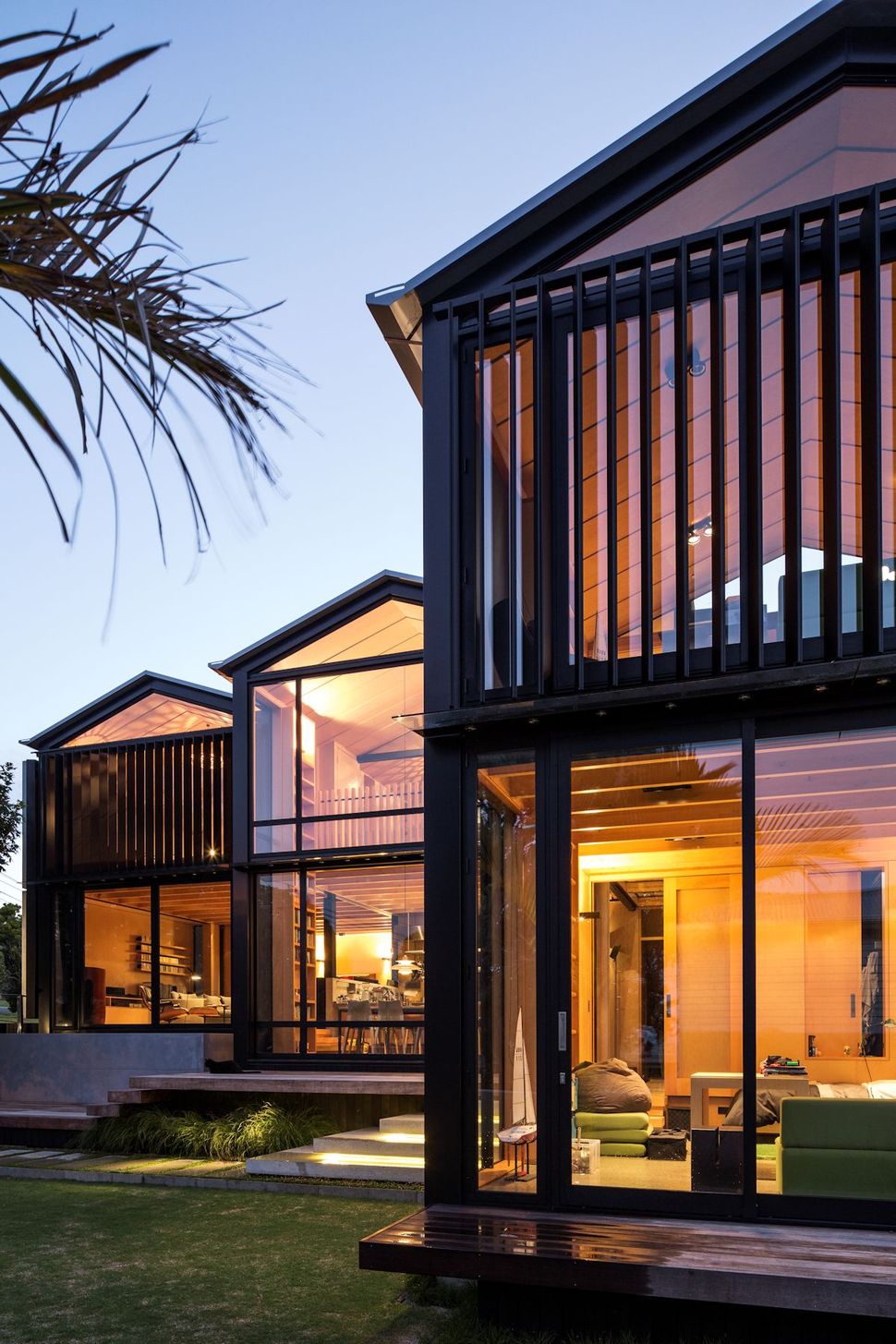
Once inside the fence and with the louvers opened, the home is completely exposed, but this exposure also allows the homeowners glimpses of the nearby Pohutukawa and baiting ocean.
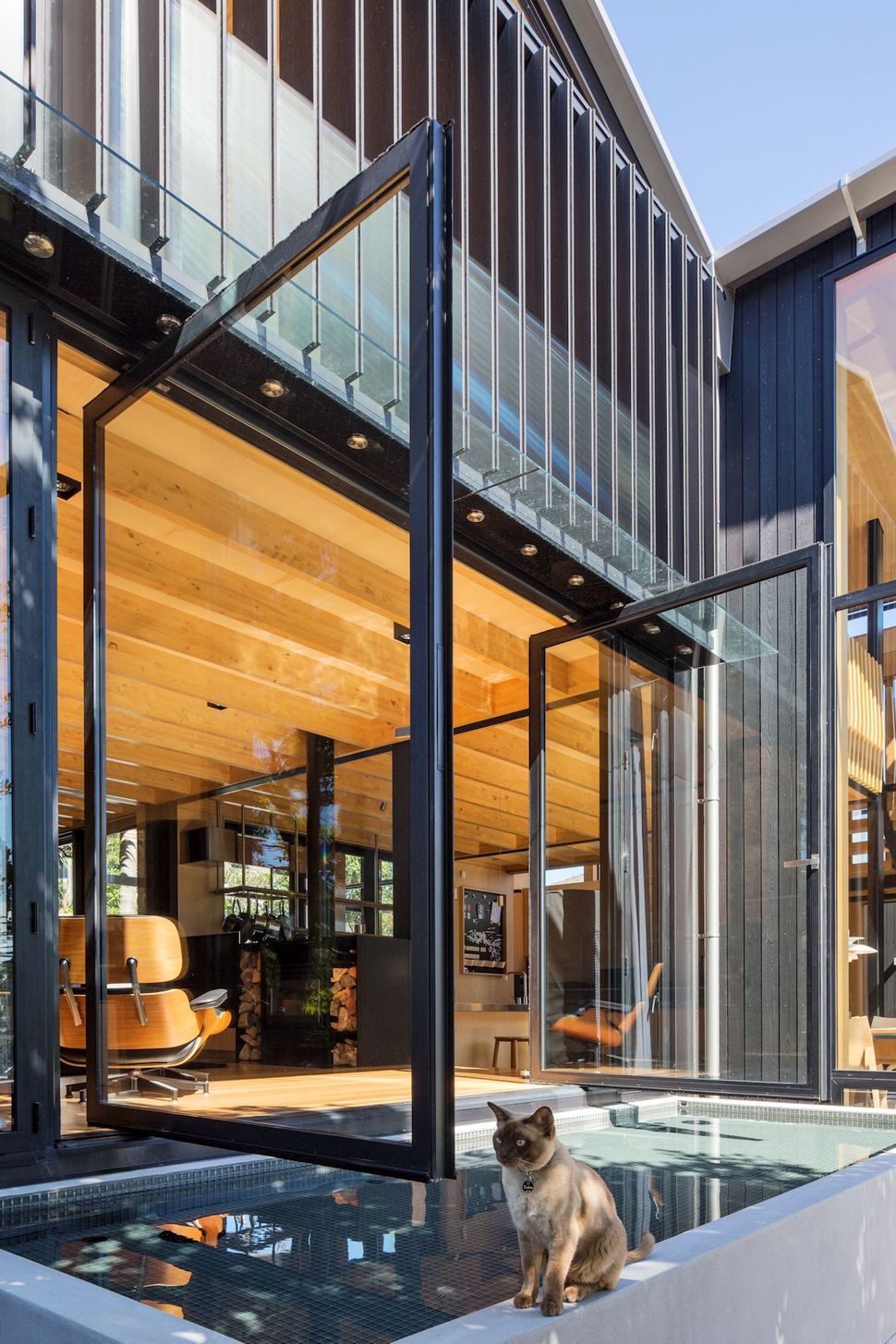
With glimpses of the Pohutukawa and baiting ocean and a Boatshed muse for the homes profile, a water feature was a must and just next to the entry a rectangular pond follows the line of the lounge inside. On warm days when the glazings are opened, the air that passes over the water is cooled before entering the home.

The lounge is where the family relaxes, watches TV, reads a book or simply warms up by the fire. It is also where the family creates music – notice the drum set in front of the books.
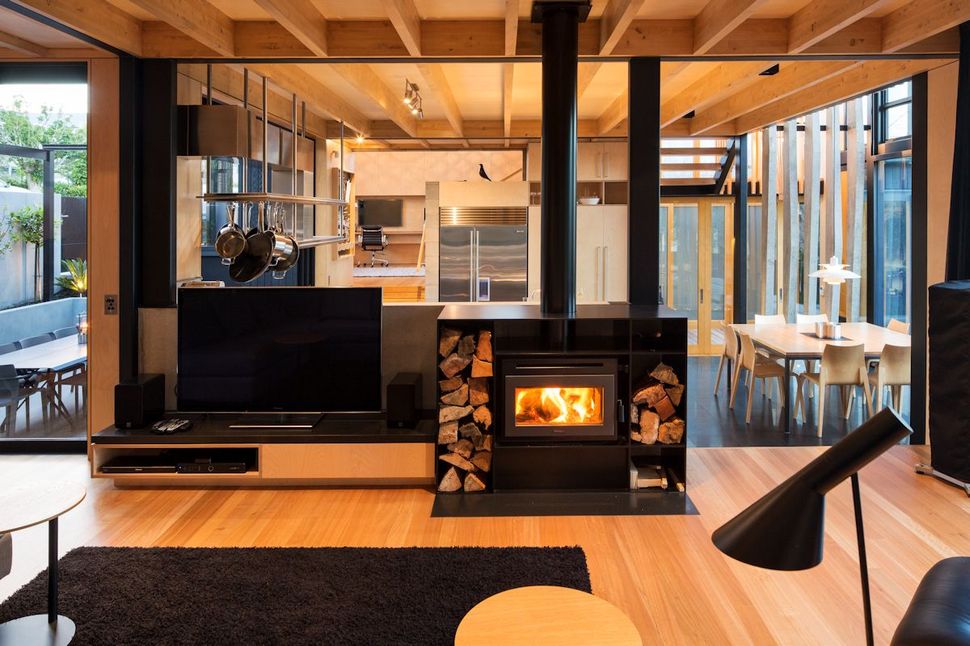
The lounge is strategically located a few steps up from the kitchen and the TV and Fireplace back onto the backsplash wall of one of the kitchen’s prep counters.
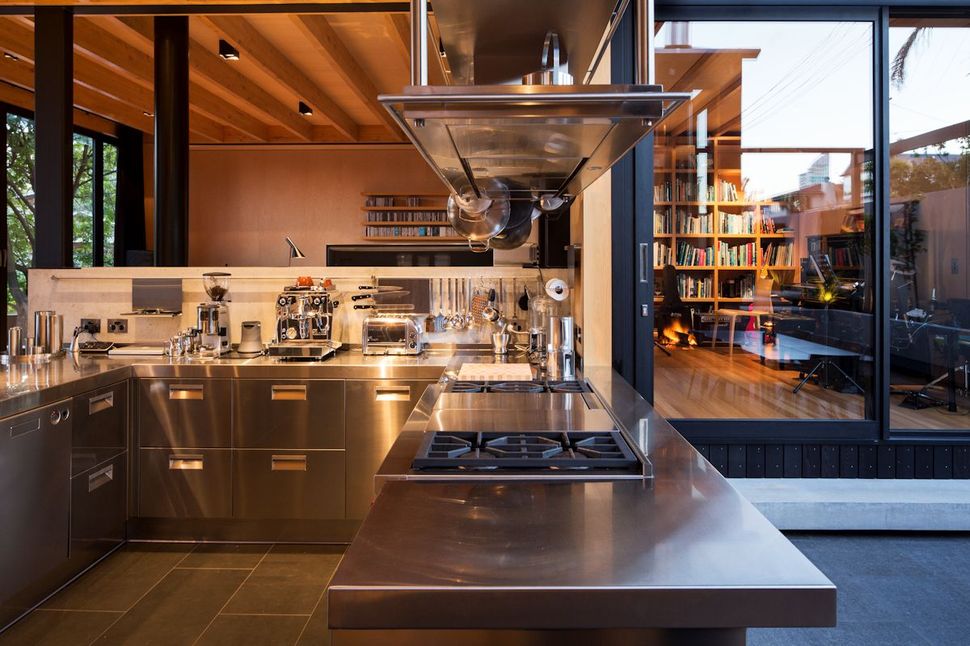
The fireplace chimney creates a vertical slash through the void between the backsplash and the timbered ceiling. The dramatic matte black line created by the flu is in direct contrast to the sparkling Stainless Steel kitchen.
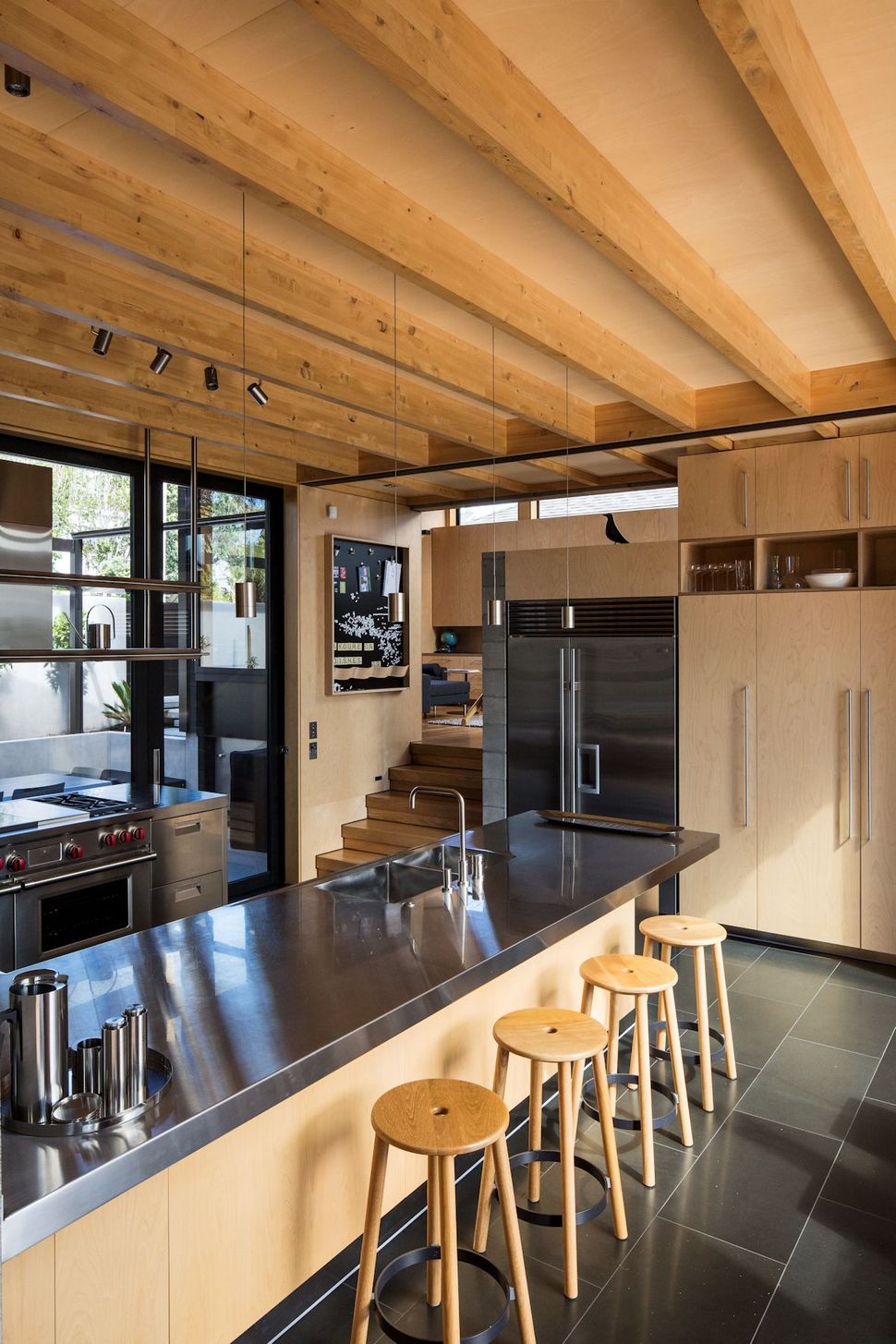
The cool tones of both the Stainless Steel used throughout the kitchen and the large 12″x24″ slate grey floor tiles are harmoniously balanced by the warm tones of the exposed ceiling joists, timbered stairwell and wood bar stools.
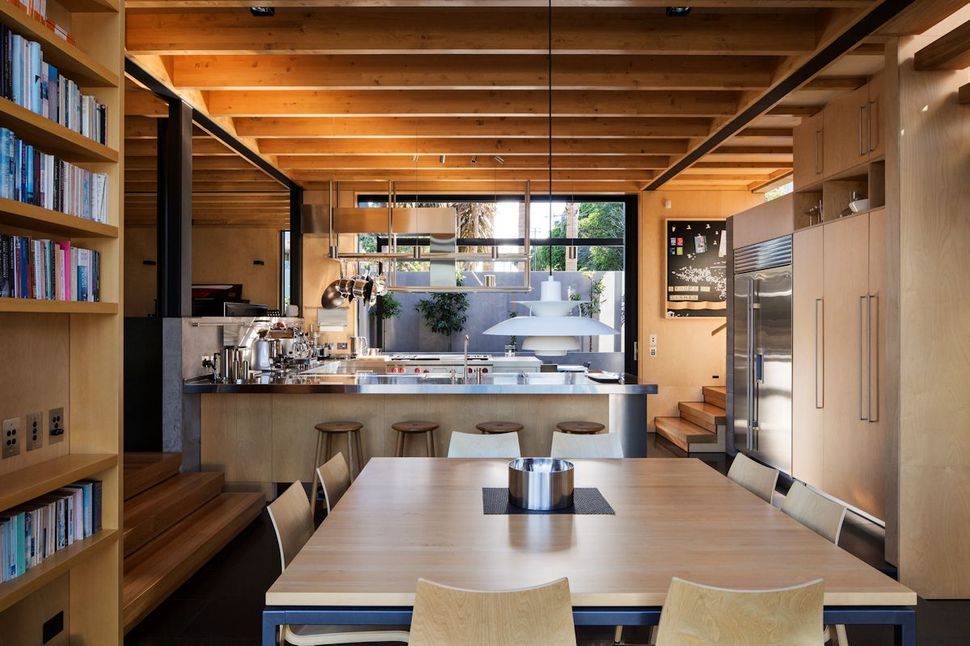
The kitchen is centrally located with a family eating area in front of it, the dining room on the back end. The lounge area on the left and stairs leading up to the family room on the right.
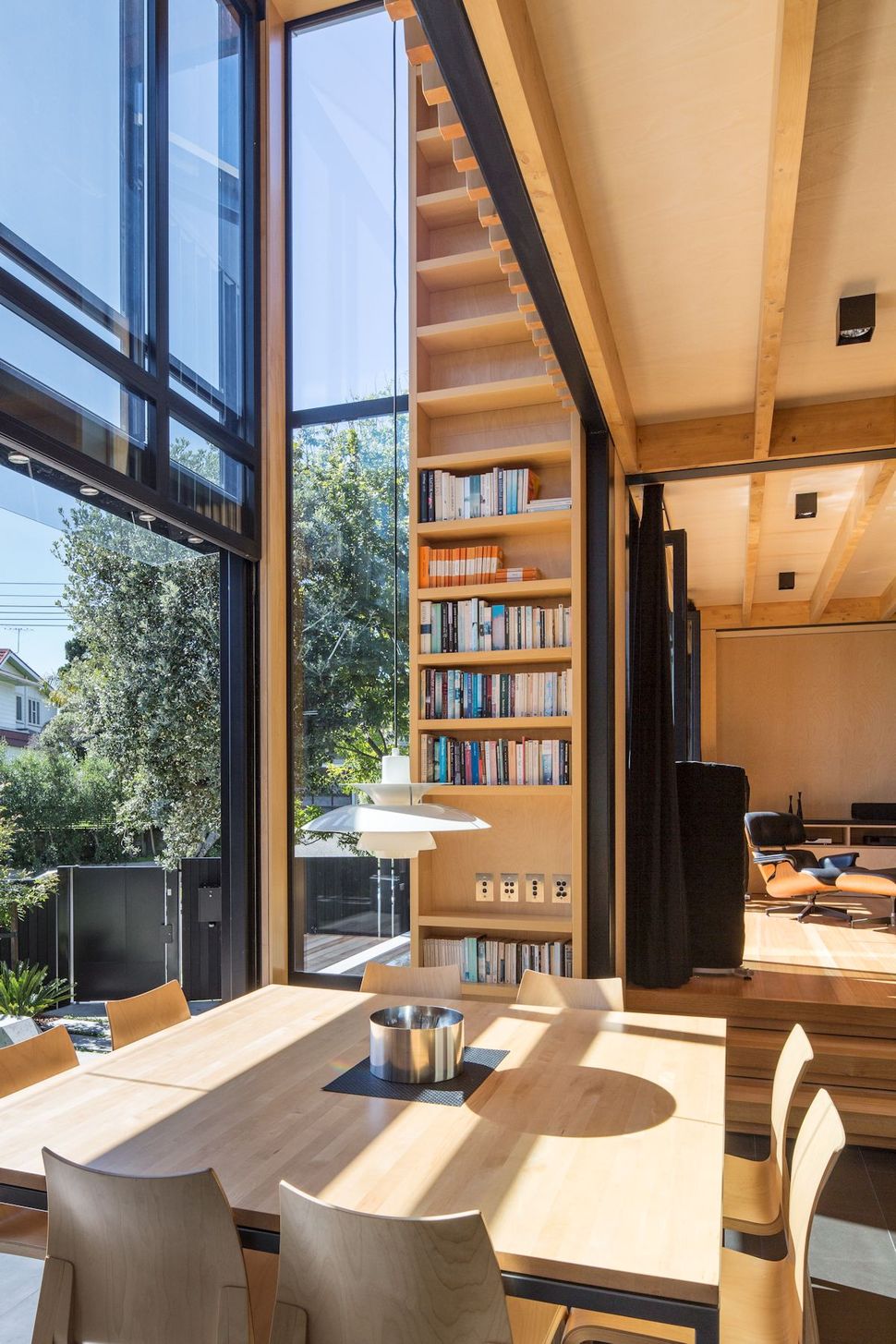
The family eating area is positioned directly in front of a wall of glazings so the family can enjoy the views over a morning cup of coffee and a double volume bookcase fills a small wall section between the windows and the lounge.
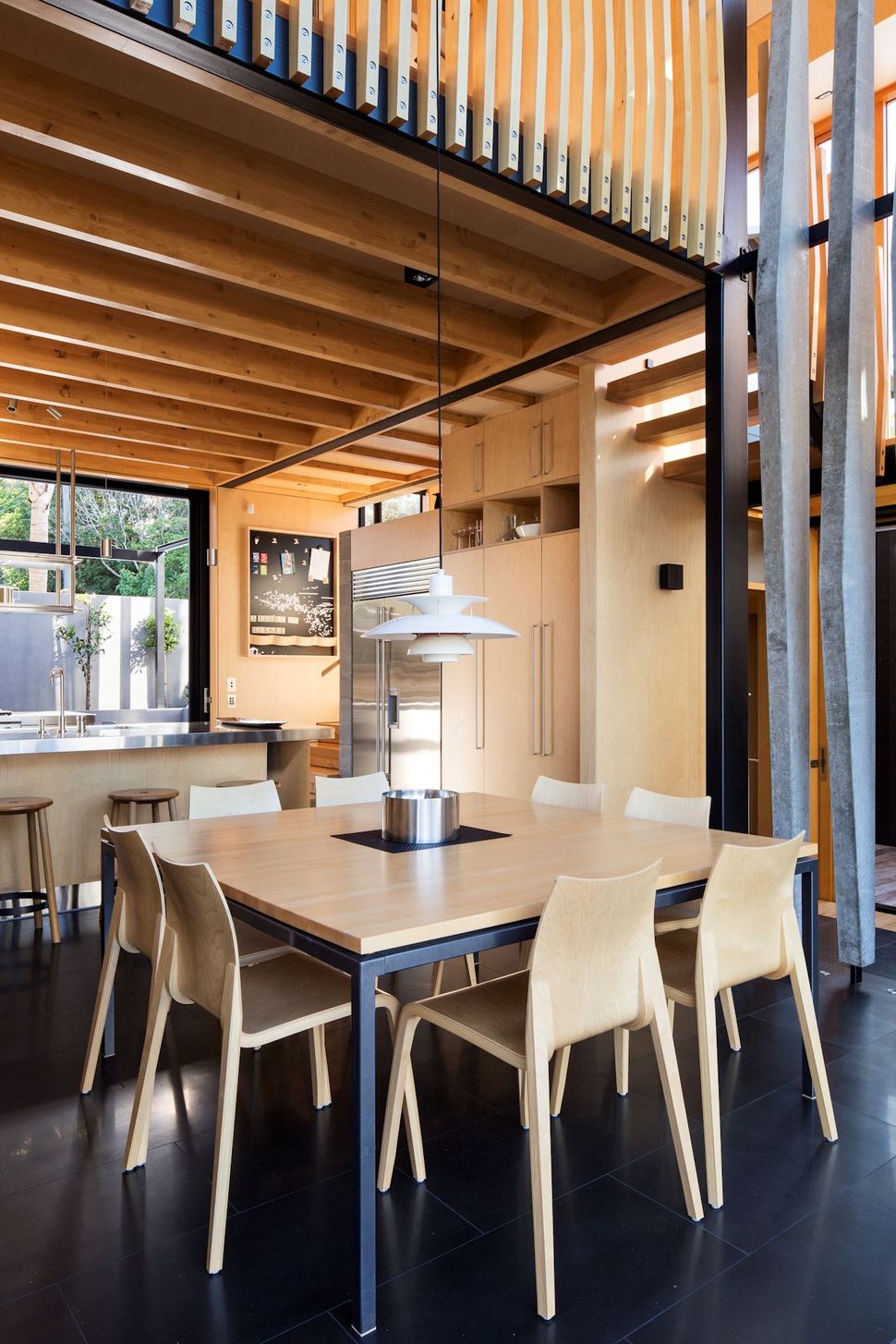
The family eating area also overlooks the entry way which is right next to it and a series of double height posts create a visual connection to the rail system on the bridge mezzanine above.
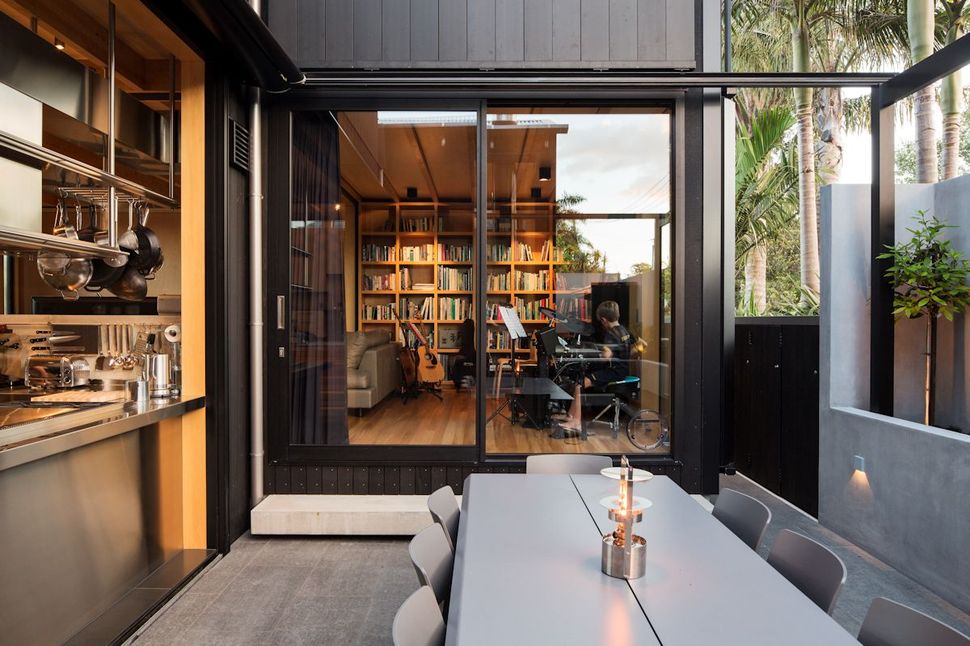
The dining room on the far side of the kitchen has views to both the family room and the music area in the lounge.
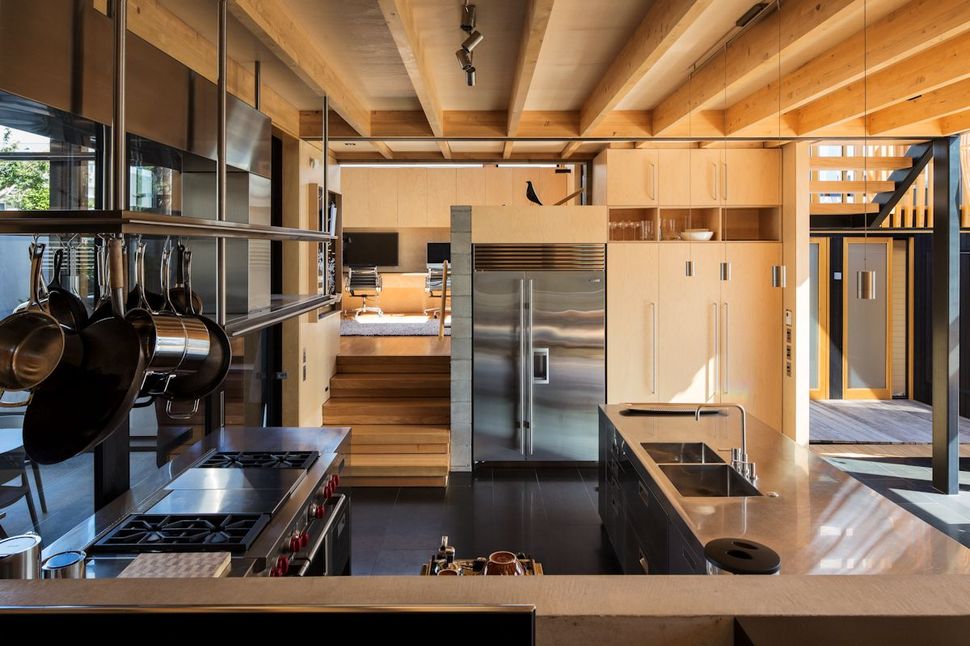
The family room next to the kitchen is accessed by a short flight of stairs located next to the fridge.
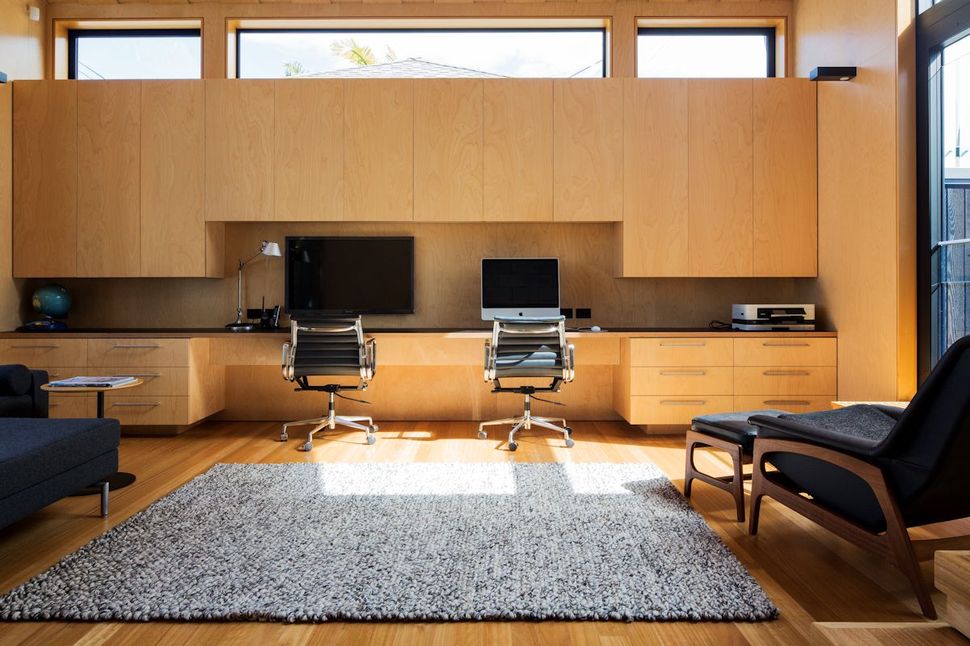
The family room is one room whose exterior wall is not covered in windows, but rather features a long work surface and storage cabinetry, even so, clerestory windows do travel the length of the room above the upper cabinets.
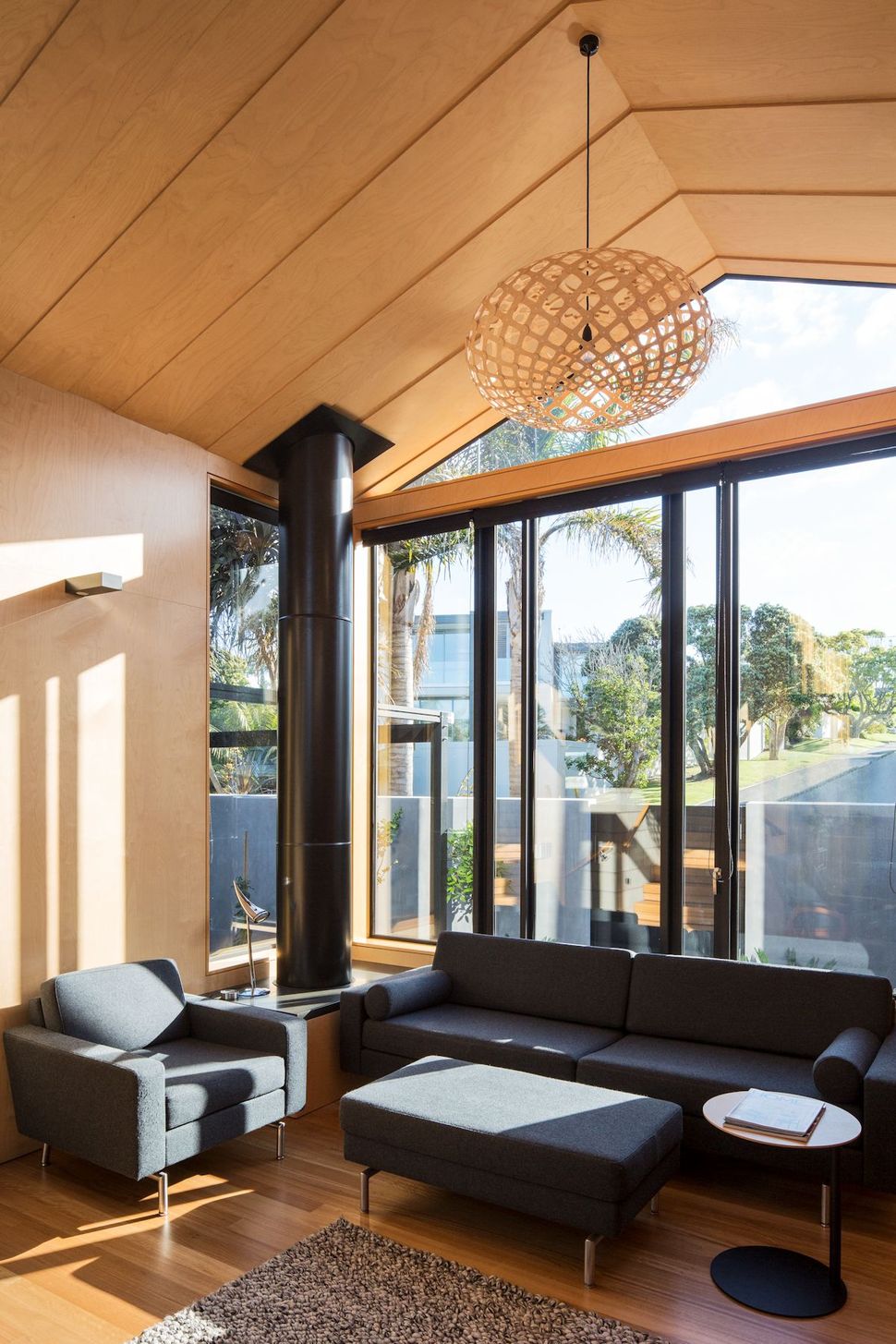
While most of the main level features flat ceilings, the ceiling in the family room follows the line of the roof gable giving the space greater height and the architects took advantage of this height with the inclusion of stunning ceiling pendants that cast the most amazing shadows in the late evening.
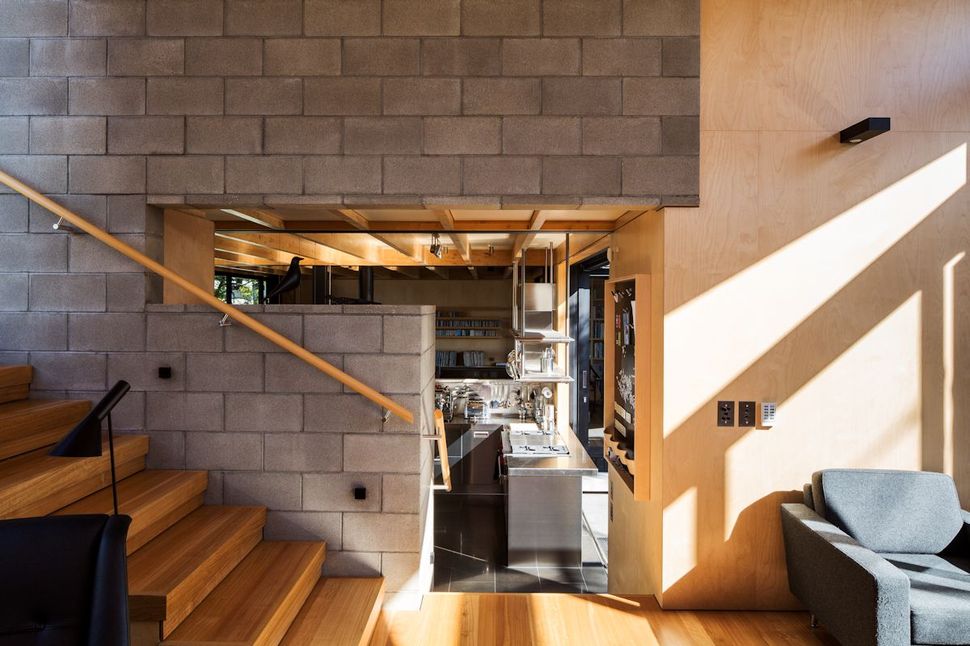
The family room also switches things up with an exposed concrete block wall that starts at the kitchen opening and travels behind the stairwell that leads to the upstairs bridge. This wall is also the exterior wall to a private courtyard that is wrapped by the family room, foyer, a boys bedroom and an ensuite to the boys bedroom.
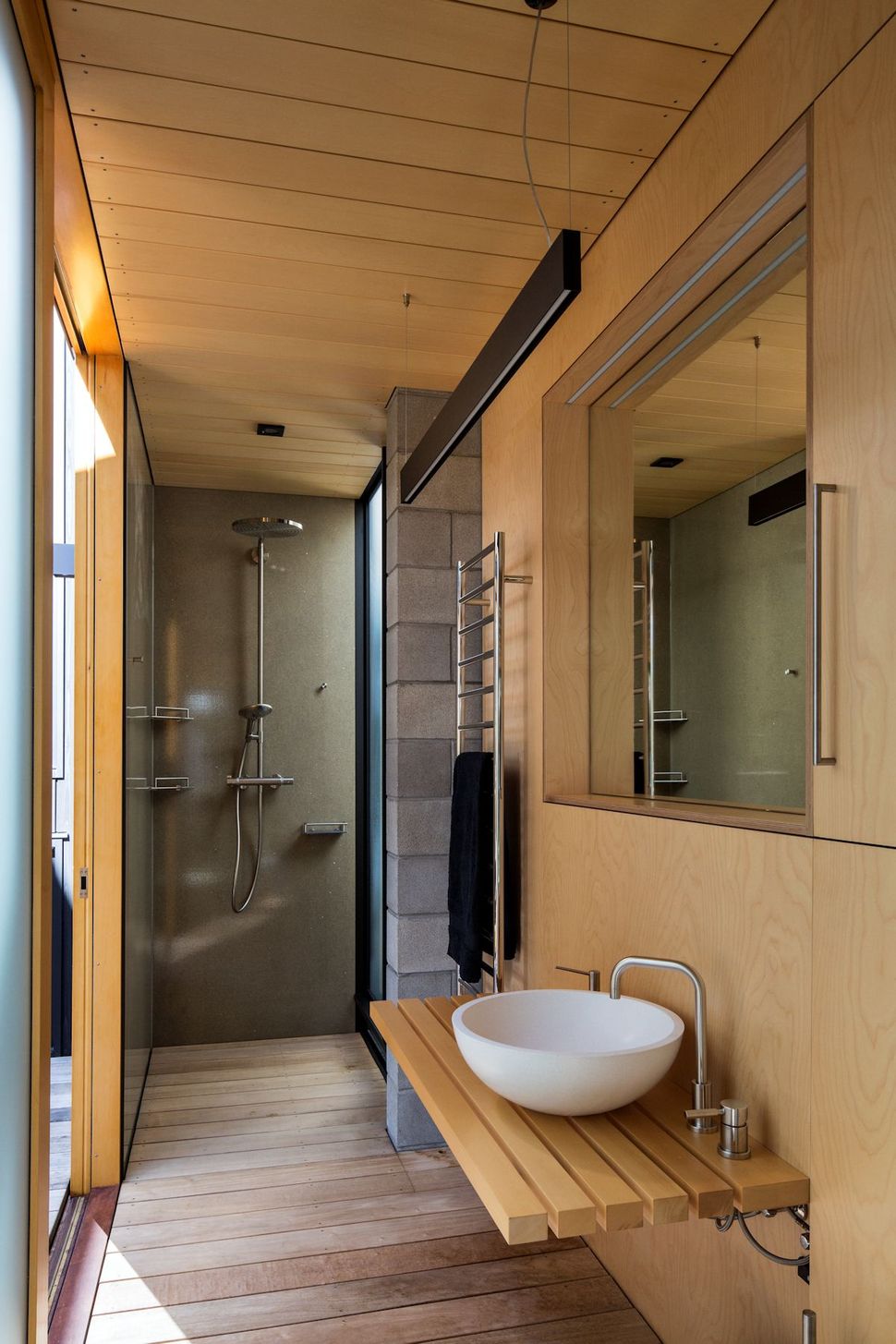
The boys bedroom ensuite has a long and narrow floor plan but with a beautiful vessel sink on a slatted wood vanity, a heated towel rack, a large rainshower head in the walk in shower with its own frosted window and sliding glass doors that open to the private courtyard, the ensuite has a real spa feel to it.
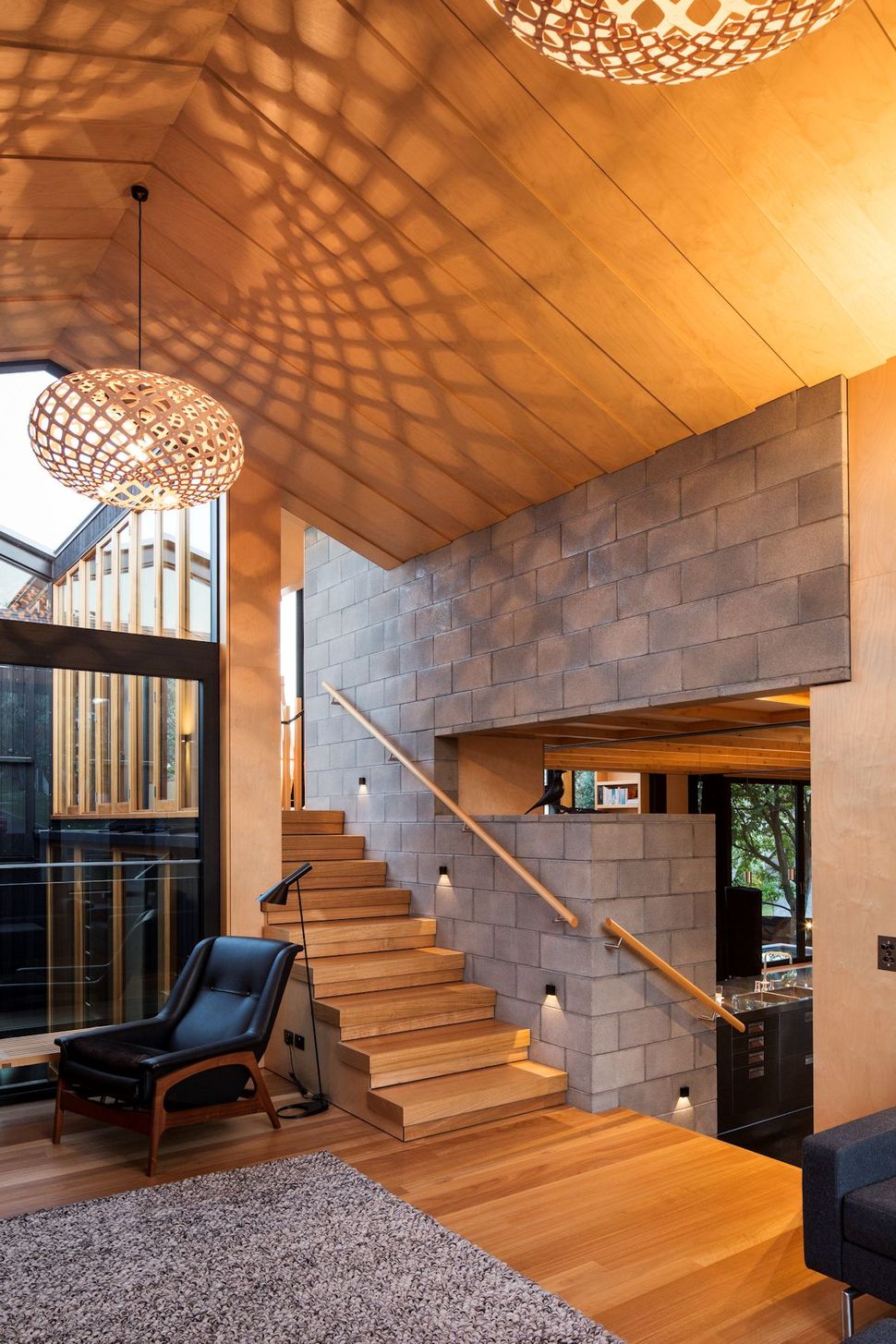
The courtyard creates a direct visual from the family room to the 2nd storey bridge, which leads to the upstairs boys bedroom directly above the downstairs boys bedroom..
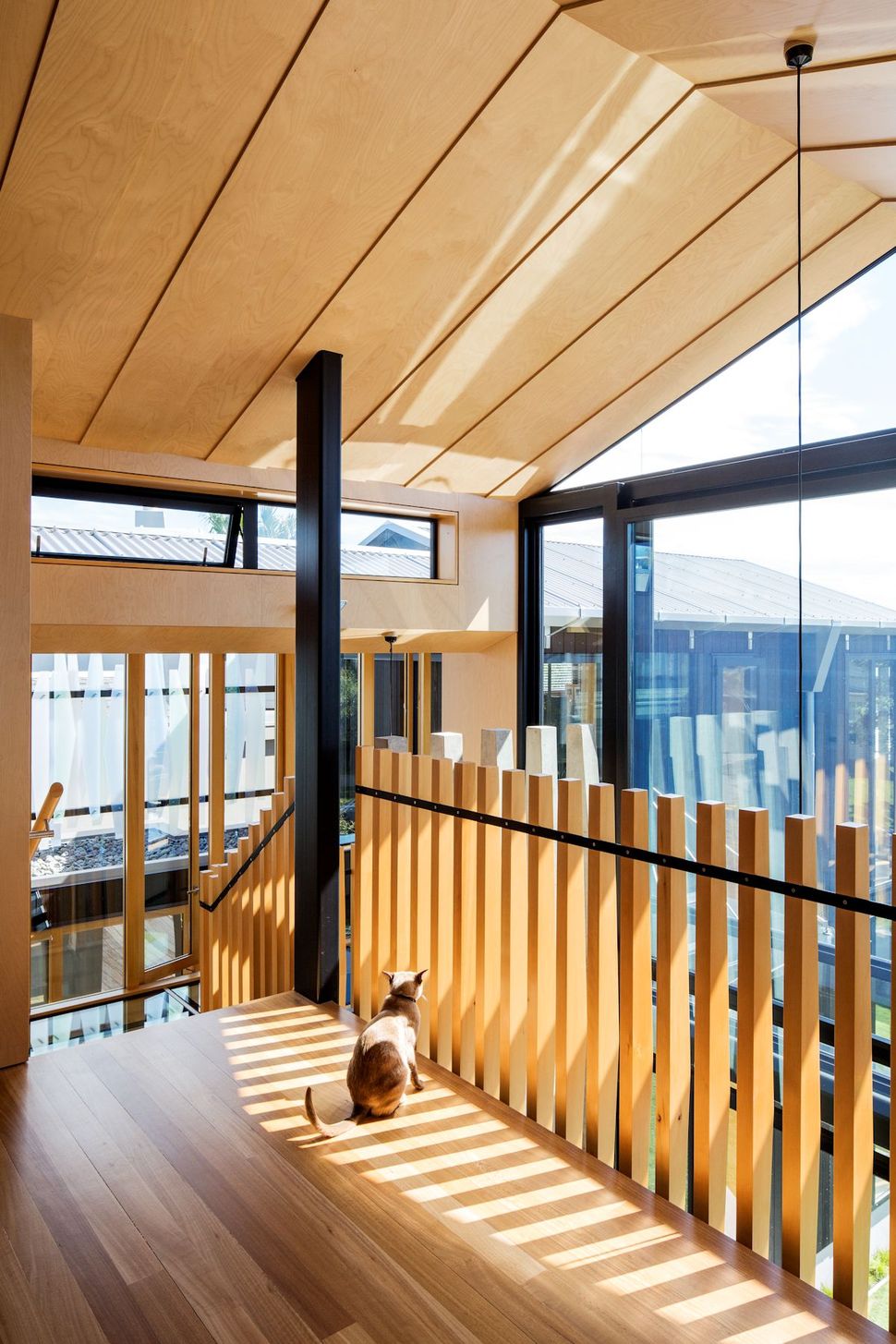
The bridge is fitted with solid 2×2 wood rails held together with black metal strapping. The highly crafted wood elements within the Boatshed House are extensive, but the juxtaposition of the black metal strapping, black window frames, Stainless Steel kitchen, grey floor tiles and all that wonderful glazing creates a nice balance of warm and cold materials.
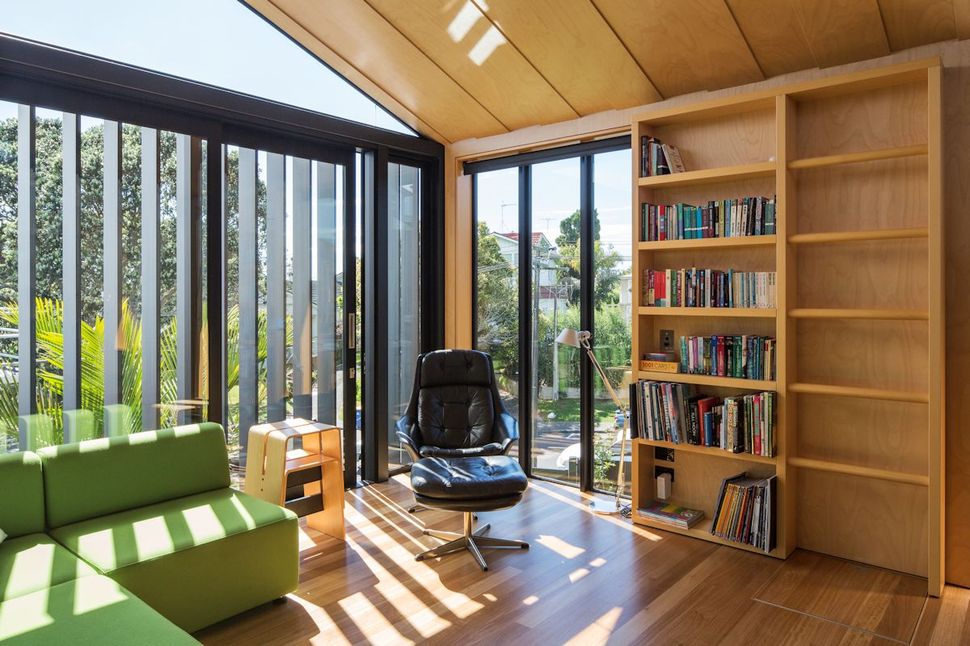
At the end of the bridge is the upstairs boys bedroom and, as with many of the other rooms, the outside of the windows have been fitted with operable louvers, allowing the room to be closed off from the street below for privacy.
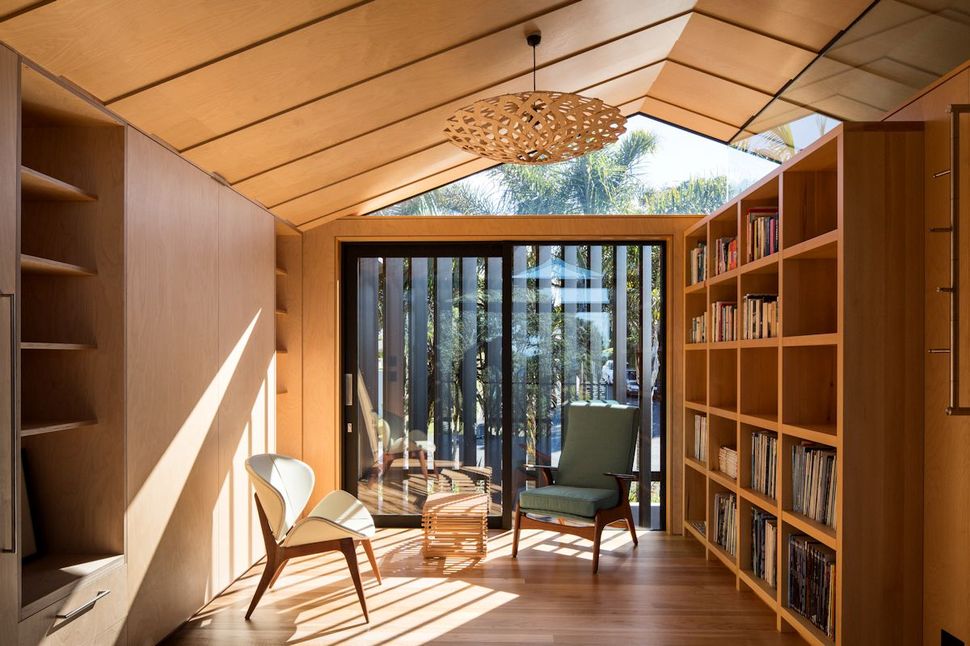
The bridge also leads to the rest of the upstairs via a passageway just at the top of the family room stairs. This passageway leads to the Master Suite but on the way there an open room used for reading and relaxing that can be closed off to create a guest bedroom.
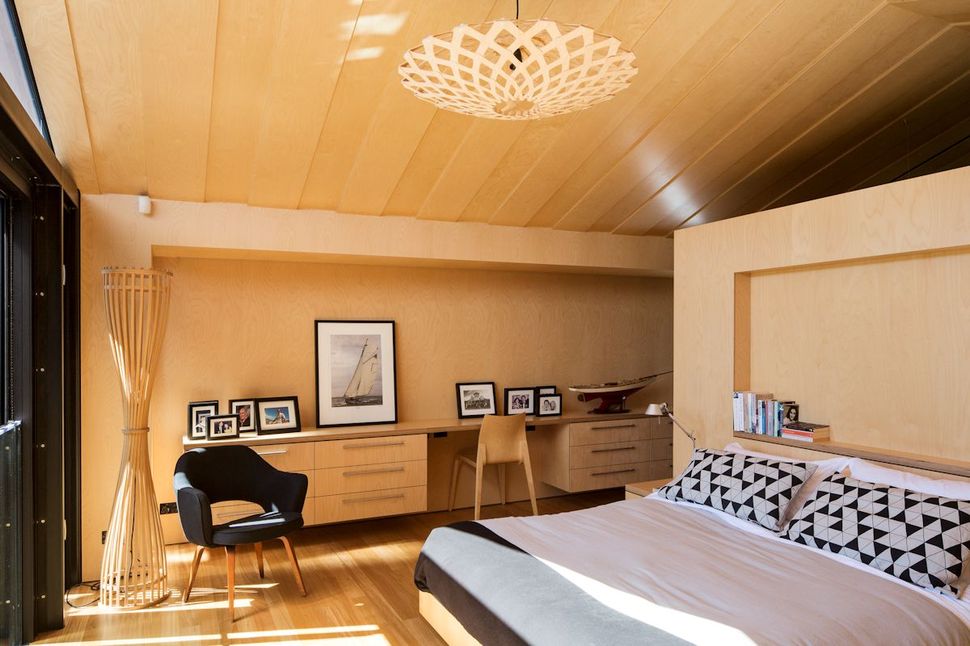
The Master Suite has the sleeping area on one end and the ensuite on the other with the walk in closet separating the two zones and the closet wall creates the headboard for the homeowner’s bed.
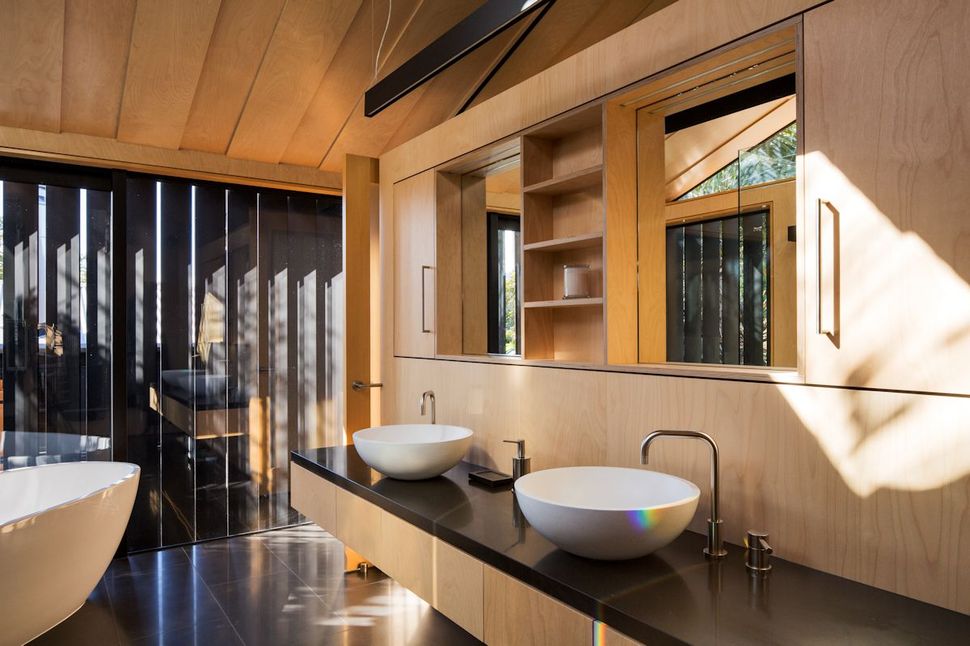
The ensuite is large and spacious and features a double vanity with two large vessel sinks and matching floating soaker tub.
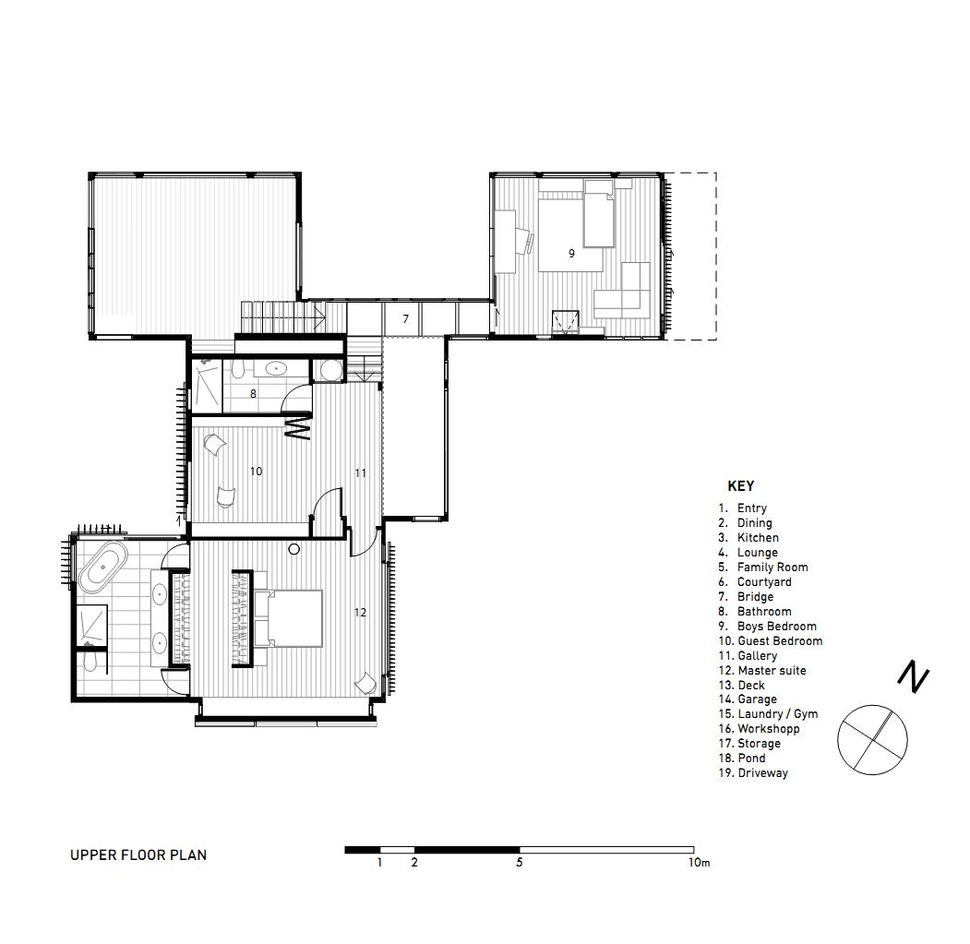
The upstairs floor plan, as with the downstairs, is created with a succession ofspaces that are connected and separate at the same time and this smudging of division creates a fluid and relaxed flow of movement perfect for a young family.

The three stepped gables of the home reference the boating and beach culture of the locale and the simplicity of the exterior form is purposefully contrasted by the craftsmanship of the timbered interiors. Aside from the attention to material and shape, the architect has also created a home that opens and closes according to the shifts in weather via walls that lift, fall, slide or fold.
Strachan Group Architects
